The Amalfi Coast is often all over the news as the top summer destination for the rich and the famous. However, unlike other high-end destinations like Monaco, Saint-Tropez, Mykonos, and so on, it offers a lot for budget tourists.
- Quiet Beaches on Amalfi Coast
- 1. Unwind Like a Local at Erchie
- 2. Scenic Furore Fjord
- Tip
- 3. Spiaggia del Duoglio
- Charming Villages Beyond the Tourist Trail
- 4. Narrow Streets of Atrani
- 5. Hilltop Village of Scala
- 6. Hamlet of Minori
- Culinary Delights
- 7. Family-run Bakeries
- 8. Agriturismo Farms in Tramonti
- 9. Amalfi Coast Local Wineries
- Amalfi Coast Hikes
- 10. Path of the Gods
- 11. Vallone delle Ferriere Nature Reserve (Valley of the Mills)
- 12. Sentiero delle Formichelle (Path of the Little Ants)
- Amalfi Coast Hidden Historical Sites
- 13. Paper Mills in the Valle dei Mulini
- 14. Mysterious Towers of the Coast
- 15. Abbey of Santa Maria de Olearia
- Read more
That’s why it made its way into so many bucket lists. But the slice of paradise comes with the crowds. Imagine Positano, one of the 3 biggest towns, has only 4,000 local population and 400,000 tourists visiting it yearly. Here’s the list of 15 hidden gems of Amalfi Coast to enjoy this Italian jewel and avoid the crowds.
Quiet Beaches on Amalfi Coast
1. Unwind Like a Local at Erchie
Erchie Beach might seem like a remote escape, but in the summer months, it’s anything but deserted. Despite its seclusion, the beach becomes packed with local beachgoers, creating a lively atmosphere that contrasts with its otherwise quiet surroundings.
Unlike other Amalfi Coast destinations, Erchie is cut off from the usual tourist routes, as ferries don’t stop here, and the Amalfi highway buses won’t take you down into town. This makes getting there a bit of a challenge.
The beach itself is dominated by the square-shaped Torre La Cerniola that stands guard over the eastern end. Unfortunately, the tower isn’t open to the public, but it’s an iconic part of the scenery.
Just beyond the promontory where the tower stands lies Spiaggia del Cauco, one of the Amalfi Coast’s secret swimming spots with surreal, crystal-clear waters.
But reaching this secluded spot isn’t for the faint-hearted. Only daredevils might try swimming or scrambling over the rocks to get there; a more reasonable approach is to hire a kayak or paddleboat in Erchie, if available.
Erchie is located to the east of Maiori along the Amalfi Coast Road, very close to Cetara.
2. Scenic Furore Fjord
Driving the coastal road between Amalfi and Positano, you might blink and miss Furore. The village is spread across the hillsides, nearly invisible. But below the road, where a bridge spans a deep gorge, lies one of the most photographed spots on the coast.
Well, not exactly, an unknown location, you have probably seen it before in captivating Instagram photos. But getting there presents a challenge, so it’s still a “hidden” gem. Getting down requires descending a long staircase from the road.
If you expect a completely private wilderness experience, it is not something that could happen. There is so little space that 30 people are a crowd.
Tip
Fiordo di Furore can easily be combined with the Path of Gods.
The fact that the beach is located at the bottom of a rocky gorge has to be the main shtick. The water is warm, there is no sand, and the pebble does not cover all of the dirt, which is not very comfortable. But a view of the Tyrrhenian Sea through the arch of the bridge is incredible
How to get to Furore Fjord without a car
The SITA bus between Amalfi and Positano stops just after the bridge. From there, walk back to the stairs and begin the descent. On the return, you’ll need to climb those same stairs, so pace yourself.
| By bus | SITA bus, stop after the bridge |
| By car | Limited roadside parking |
| On foot | Stairs from the road to the beach |
| By boat | Possible to arrive by sea |
3. Spiaggia del Duoglio
Duoglio Beach is a hidden spot just a kilometer from Amalfi town, offering a more secluded alternative to the busier beaches nearby.
Duoglio is one of those quiet beaches on the Amalfi Coast. It is known for its exceptionally clear water, being among the cleanest along the Amalfi Coast. The shoreline is a mix of pebbles and coarse sand, and while the setting is picturesque, it may not be ideal for those seeking a traditional sandy beach experience. The cliffs surrounding the beach provide some shelter, making the water calm and suitable for swimming.
Duoglio is frequented by locals and visitors who prefer a less commercialized beach. It has two small establishments where you can rent sunbeds and umbrellas, along with a bar and restaurant serving local dishes. There’s also a free area for those who prefer to bring their own gear.
Accessing the beach requires descending over 400 steep steps from the Amalfitana Road or taking a short ferry ride from Amalfi’s port, which is only around €8 / $9 / £7
For those interested in water sports, the beach offers rentals for canoes and windsurfing. However, due to its position, the sun leaves the beach by mid-afternoon, so early arrival is recommended if you want to enjoy the sunshine.
Charming Villages Beyond the Tourist Trail
4. Narrow Streets of Atrani
Atrani is the smallest town in southern Italy. Atrani is often overlooked in favor of its more famous neighbors, yet it boasts a unique charm that captivates visitors. This quaint seaside village features narrow alleys, vibrant houses, and a stunning coastline.
The main square, Piazza Umberto I, is a lovely spot for enjoying a coffee while soaking in the atmosphere. The stunning Church of San Salvatore de’ Birecto, with its colorful dome, adds to the village’s visual appeal.
Atrani is one of those non-touristy Amalfi Coast destinations. It offers a blend of beaches and hiking trails. The nearby path leads to Ravello, winding through lush landscapes. This village remains a pristine example of authentic coastal life, perfect for those who appreciate tranquility.
5. Hilltop Village of Scala
Scala is the oldest village on the Amalfi Coast, providing an opportunity to explore the area’s deep historical roots. One of Scala’s most significant landmarks is the Cathedral of San Lorenzo.
Originally built in the 12th century and later remodeled in a Rococo style. Inside, you’ll find striking contrasts between the simple, white-walled interior and the vividly colored ceiling, along with the intricate majolica tile floor typical of the region.
The cathedral also houses a crypt featuring a unique crucifix adorned with a golden crown, rather than thorns, and the sepulcher of Marinella Rufolo, a notable historical figure.
Another key site is the Basilica of Sant’Eustachio, located between the hamlets of Minuta and Pontone. These ruins, dating back to the 12th century, offer a glimpse into the medieval past of the Amalfi Coast. Though largely in ruins, the site retains parts of its perimeter walls and the apse, with architectural elements that reflect both Romanesque and Arabian influences.
The basilica has an elevated position providing sweeping views of the surrounding valleys and coastline. The trek up is around 3,000 steps.
For those interested in religious sites, the Sanctuary of Santa Maria dei Monti is another important stop. This sanctuary, accessible by a scenic hike, offers not only spiritual significance but also a deeper connection to the natural beauty of the area. It’s a place where history and nature blend seamlessly, providing a peaceful retreat from the more crowded areas of the coast.
6. Hamlet of Minori
Minori, a small town on the Amalfi Coast, is notable for its rich Roman history and its lemon production. A highlight of the town is the Roman Villa Marittima, an archaeological site dating back to the 1st century AD. The villa, which likely served as a luxurious seaside retreat for a wealthy Roman family, features well-preserved frescoes, mosaics, and a bath complex. Visitors can explore the ruins, including the grand peristyle and various rooms that offer a glimpse into ancient Roman life.
Minori is also famous for its production of limoncello, a traditional lemon liqueur made from the zest of locally grown lemons. The town’s lemon groves, nurtured by the region’s unique climate, are among the best on the Amalfi Coast. Many local producers offer tastings and tours, providing insight into the traditional methods used to create this beloved drink.
For those who enjoy walking, the Sentiero dei Limoni (Lemon Path) offers a pleasant and scenic route through the lemon groves. This 8-kilometer trail (both ways) connects Minori with the nearby town of Maiori, winding through fragrant lemon orchards and offering stunning views of the coast. The path includes several ascents and descents, along with approximately 400 steps, making it a moderately challenging but rewarding walk.
Trek Details
Culinary Delights
As mentioned above, lemon groves are an indivisible part of the local landscape and, as a result, local cuisine. But limoncello is not the only product based on lemons. Sweets, alcohol, perfume, soap, and even pizza. A special Amalfi interpretation of Margherita – lemon slices with dough, tomatoes, and mozzarella. No single Italian meal would go without pasta. Here it’s served with anchovies and lemon-based sauce.
7. Family-run Bakeries
Conca dei Marini is renowned for its delicious seafood dishes and traditional recipes that highlight the area’s gastronomic heritage. Local restaurants often feature specialties such as “spaghetti alle vongole,” a simple yet flavorful dish made with fresh clams caught in nearby waters.


For those looking for Amalfi Coast local cuisine spots, there are several family-run bakeries famous for the signature dessert, delizia al limone. This lemon sponge cake is a true symbol of the region, celebrated for its light, airy texture and the intense, fragrant flavor of Amalfi lemons. The dessert consists of a small dome of sponge cake filled with lemon custard and soaked in limoncello. The cake is then covered with a smooth lemon glaze and often garnished with whipped cream and lemon zest.
8. Agriturismo Farms in Tramonti
Tramonti, located in the Lattari Mountains above the Amalfi Coast, is visited for its farm-to-table experience. Known for its steep terraced vineyards and fertile volcanic soil, Tramonti is particularly famous for producing Fiano, a local white wine with a distinct flavor profile that reflects the region’s terroir.
In addition to its wine, Tramonti is celebrated for its dairy farms, where a variety of cheeses are made, including the fresh mozzarella fiordilatte and the aged pecorino. The cool climate of Tramonti, despite its proximity to the sun-drenched coast, provides ideal conditions for cheese-making. Many of these farms open their doors to visitors, offering tastings that allow you to sample these cheeses directly from the source.
9. Amalfi Coast Local Wineries
Furore is not only known for its scenic beach but also vertical vineyards. There grapevines cling to steep cliffs that plunge into the sea. These vineyards are an impressive example of heroic agriculture, where local winemakers have managed to cultivate grapes in seemingly impossible conditions. The Marisa Cuomo Winery, one of the most famous in the region, is known for producing exceptional wines that capture the essence of this rugged landscape.
A visit to Furore’s vineyards often includes a tour of the wine cellars, which are carved directly into the rock. These cellars maintain the perfect conditions for aging wine, and their secretive, tucked-away nature adds to the mystique of the wine produced here. During these tours, visitors can sample wines like the acclaimed Fiorduva, which is made from indigenous grape varieties.
Amalfi Coast Hikes
10. Path of the Gods
The Sentiero degli Dei, or the Path of the Gods, provides an epic hiking experience. Stretching from Bomerano to Nocelle, this scenic trail offers panoramic views of the coastline. Hikers navigate through terraced vineyards and fragrant Mediterranean vegetation.
The path is well-marked, making it accessible for most visitors. Along the way, there are idyllic spots to pause and admire the sea views or capture photographs. This route not only connects small villages but also reveals hidden aspects of local life of Amalfi Coast Various vantage points along the trail provide breathtaking glimpses of the cliffs and shimmering waters below.
Trek Details
11. Vallone delle Ferriere Nature Reserve (Valley of the Mills)
Vallone delle Ferriere is a hidden sanctuary for nature enthusiasts. Located on the outskirts of Amalfi. The trail through Vallone delle Ferriere reveals an array of local flora and fauna. Large ferns and Mediterranean plants can be spotted along the way. The highlight of this area is the cascading waterfalls.
Historically, this valley was known for its paper mills, remnants of which can still be seen. It takes a steep hill climb to see it. A powerful river Rio Canneto used to flow through the paper factory tunnel back in the day. A modest stream is all that is left of a once mighty river.
Trek Details
12. Sentiero delle Formichelle (Path of the Little Ants)
In the same way as the Lemon Path, the history of this trail revolves around lemons. The name “formichelle” was affectionately given to the women of Tramonti. These women carried up to 60 kg (132 lbs) of freshly harvested lemons in woven baskets on their heads, navigating this rugged path to transport the prized Amalfi lemons to the markets in Maiori and Minori.
Trek Details
Amalfi Coast Hidden Historical Sites
13. Paper Mills in the Valle dei Mulini
The paper mills in Amalfi date back to the 12th century and were among the oldest in Italy. These mills specialized in producing handcrafted paper using traditional methods that have been passed down through generations. Today, the remnants of the old paper mills present are those of undiscovered Amalfi Coast ruins.
Those willing to learn more about the paper-making process can explore the Museo della Carta (Paper Museum). There, one can observe how fibers from plants like jute and hemp are transformed into sheets of paper. The intricate techniques used are as fascinating as the resulting products, which include decorative papers and art pieces.
14. Mysterious Towers of the Coast
Along the Amalfi Coast, ancient Saracen towers like the Torre Mezzacapo and the Torre dello Ziro serve as key historical landmarks. They were part of a network of lookout towers that monitored the coastline for incoming threats, particularly pirate ships. Today, visitors can climb these towers to enjoy sweeping views of the Gulf of Naples.
For example, the Torre dello Ziro, located near Amalfi, was built in the 16th century on a cliff about 300 meters above the sea. This tower was crucial in the early warning system that alerted the local population to approaching invaders. The tower is also associated with the dark legend of Giovanna of Aragon, who was allegedly imprisoned there, adding a layer of historical intrigue to the site.
15. Abbey of Santa Maria de Olearia
Yet, another interesting spot near Furore. The Abbey of Santa Maria is one of the underexplored Amalfi Coast monasteries. A former monastery, it was founded in the 10th century by Basilian monks who sought a secluded place for contemplation and worship. The abbey’s name, “de Olearia,” reflects the region’s olive cultivation, particularly for producing olive oil.
The abbey complex includes several small churches, with the most notable being the crypt chapel adorned with well-preserved frescoes from the 11th and 12th centuries. These frescoes depict religious scenes, including a striking image of Christ in a golden mantle surrounded by archangels, showcasing a blend of Byzantine and Western artistic influences.
Some cells are reserved for tourists and are available for booking. The prices for stay start at €145
The location of the abbey, carved directly into the rock, made it a perfect retreat for monks seeking solitude. This setting also contributed to the site’s durability, preserving it through centuries of change. Although the abbey’s religious activities ceased in the 16th century, it is worth exploring due to its historical and architectural value.
It is believed that the Amalfi Coast is the most beautiful. It’s no surprise that the Amalfi Coast is the most photographed place in Europe. However, it’s believed that the best shots can be taken only from the water.


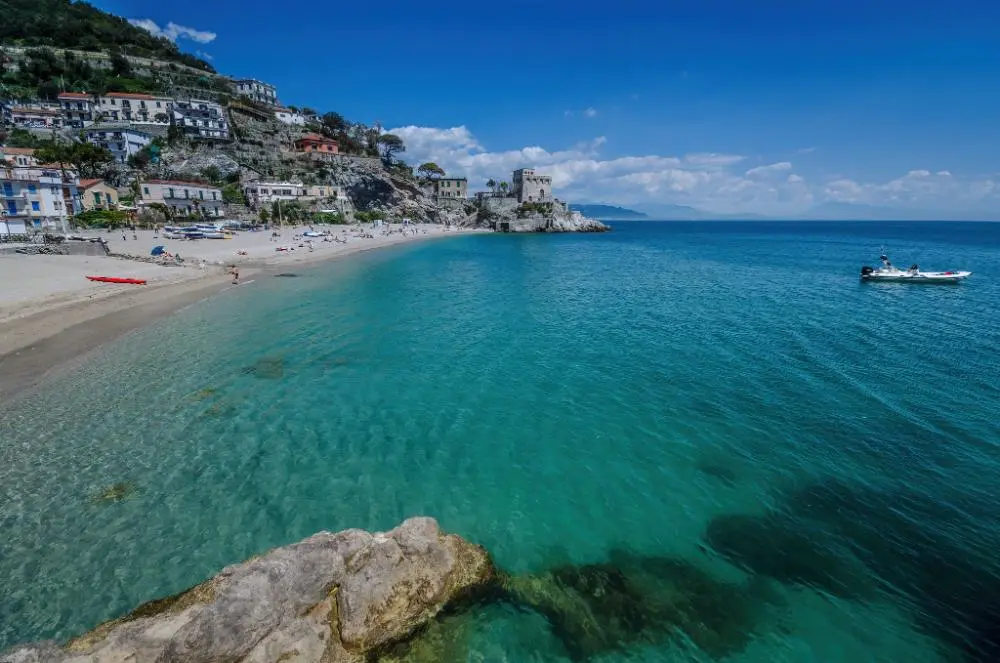


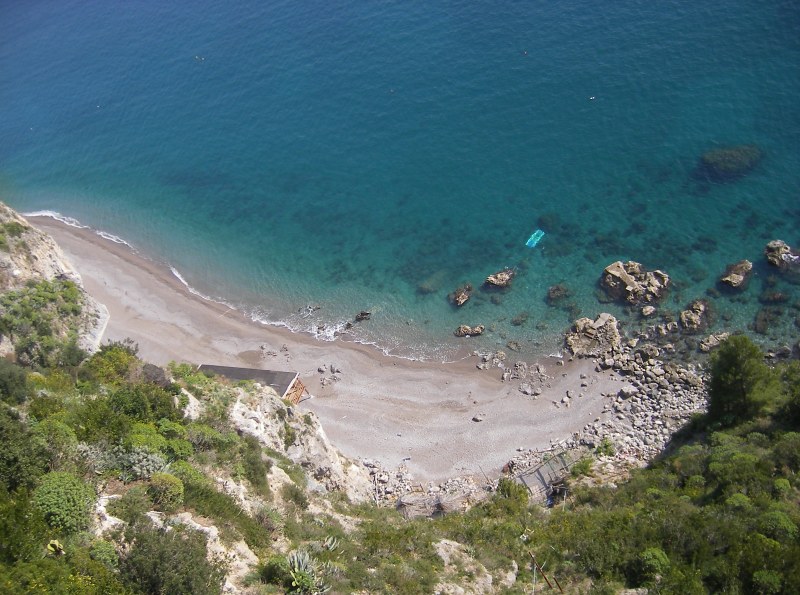
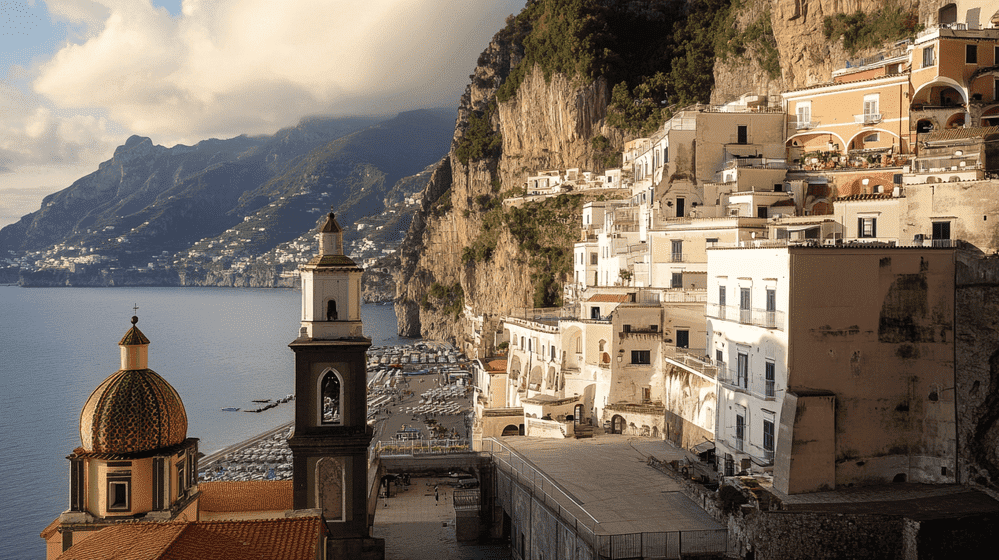
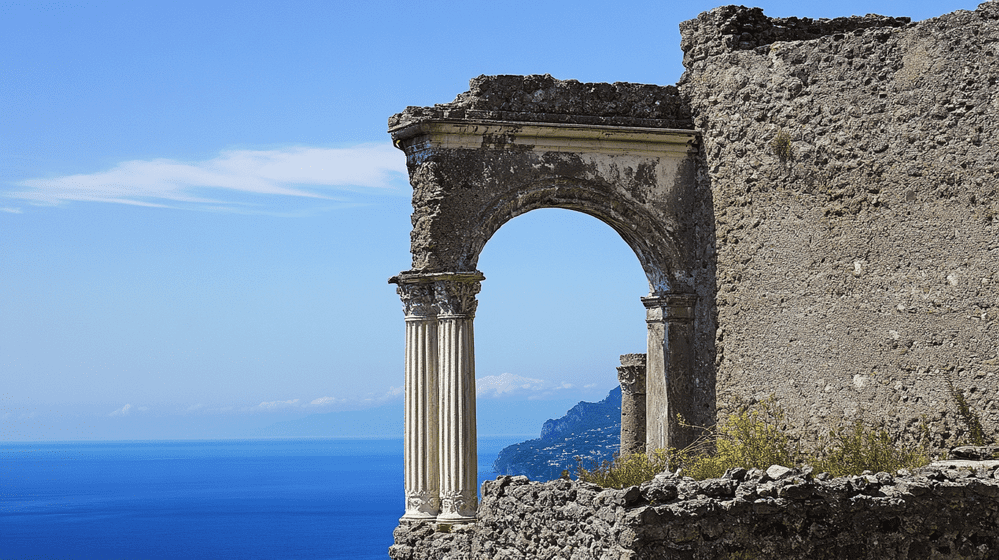
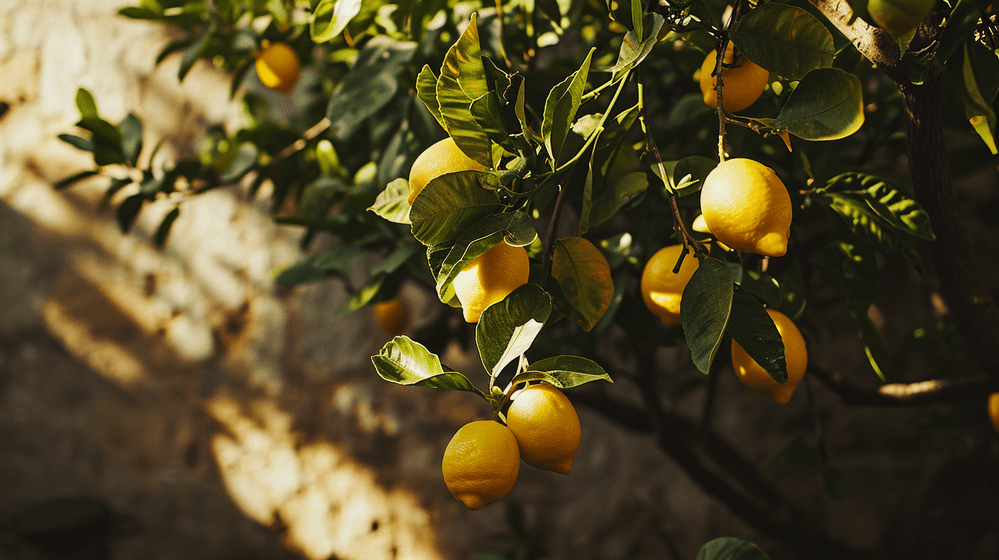

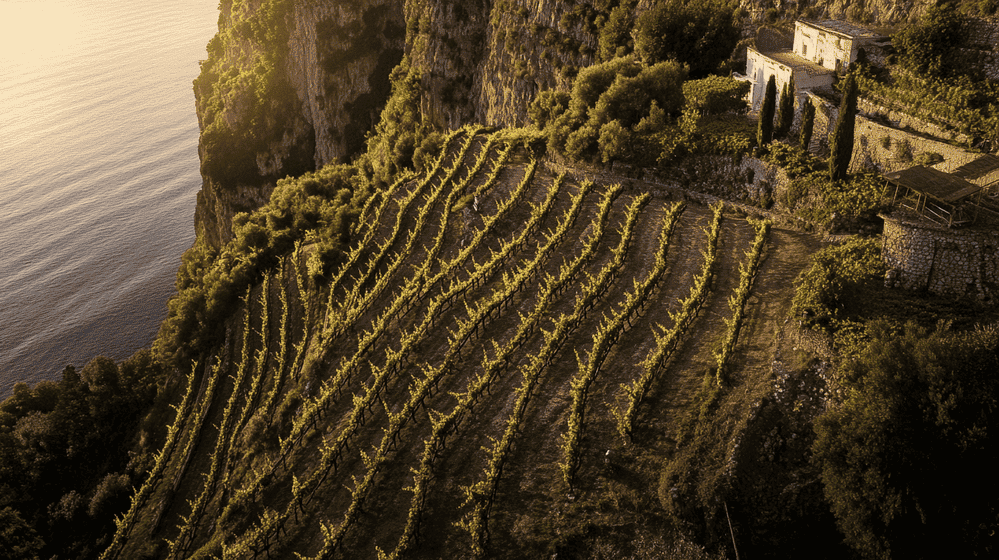
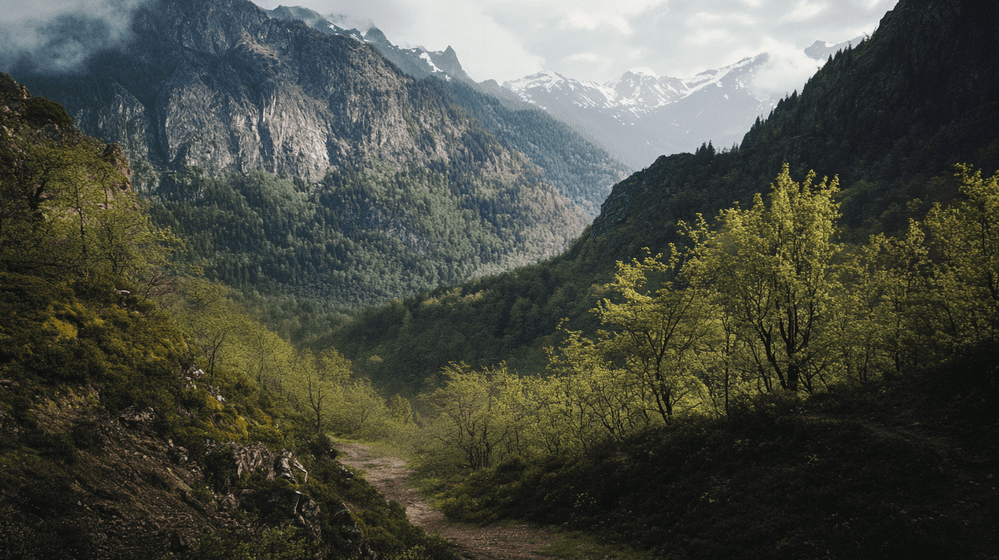

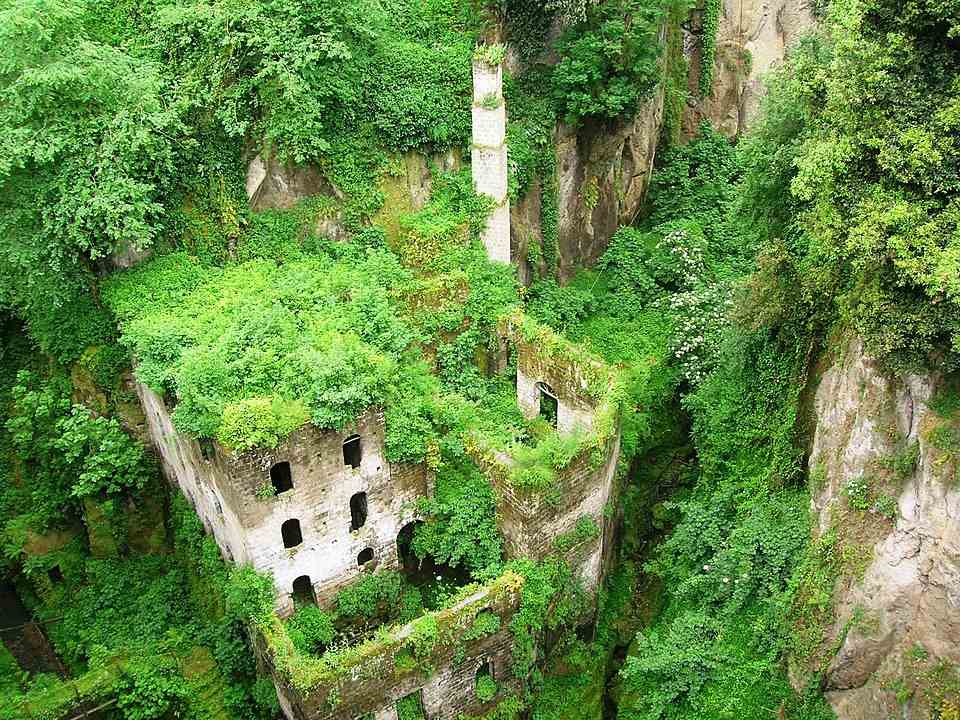

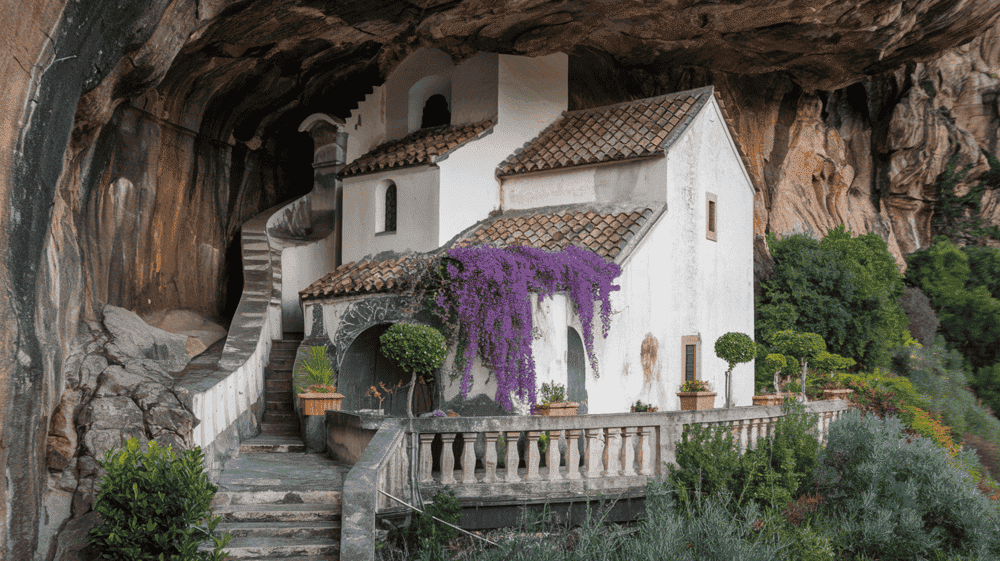
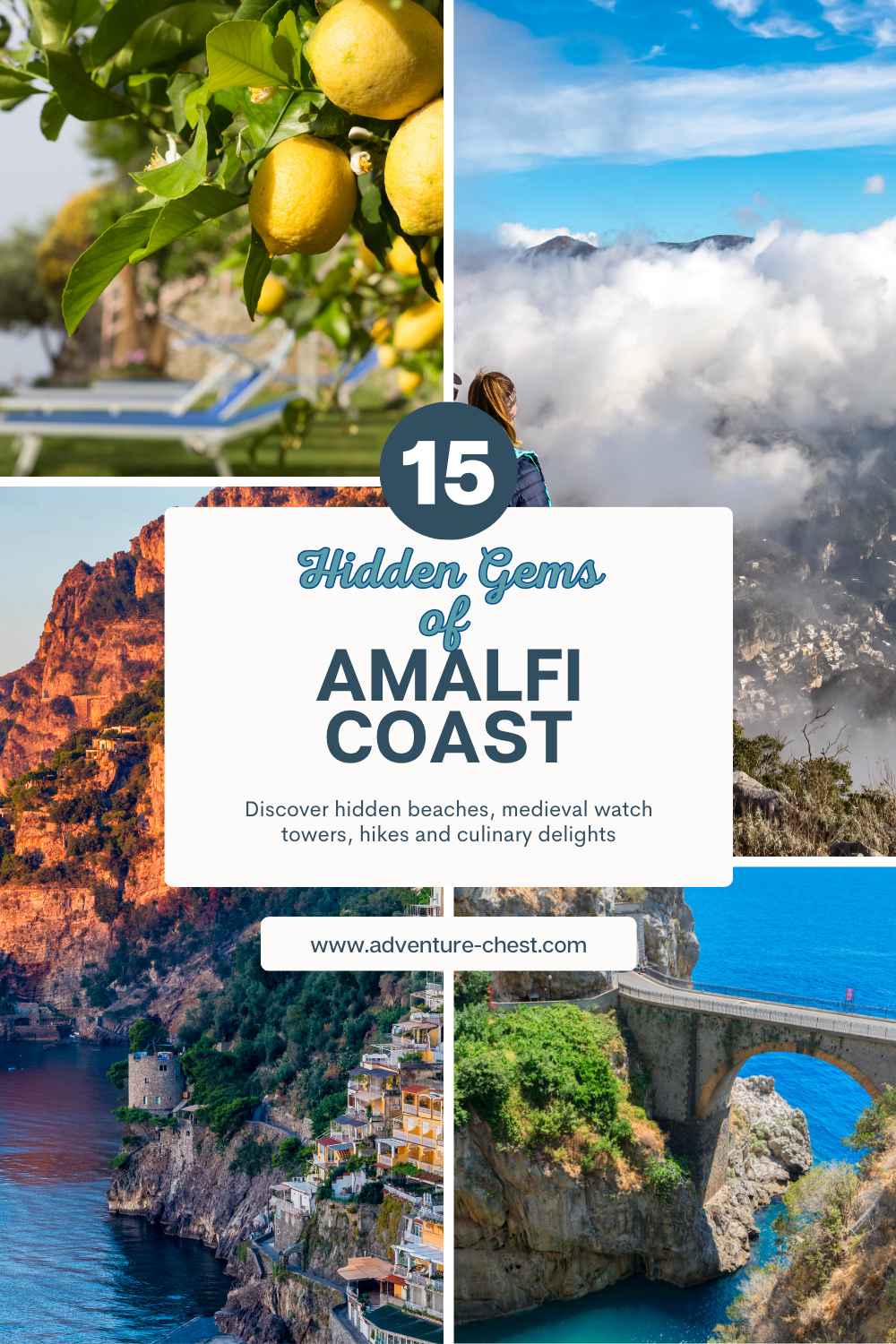
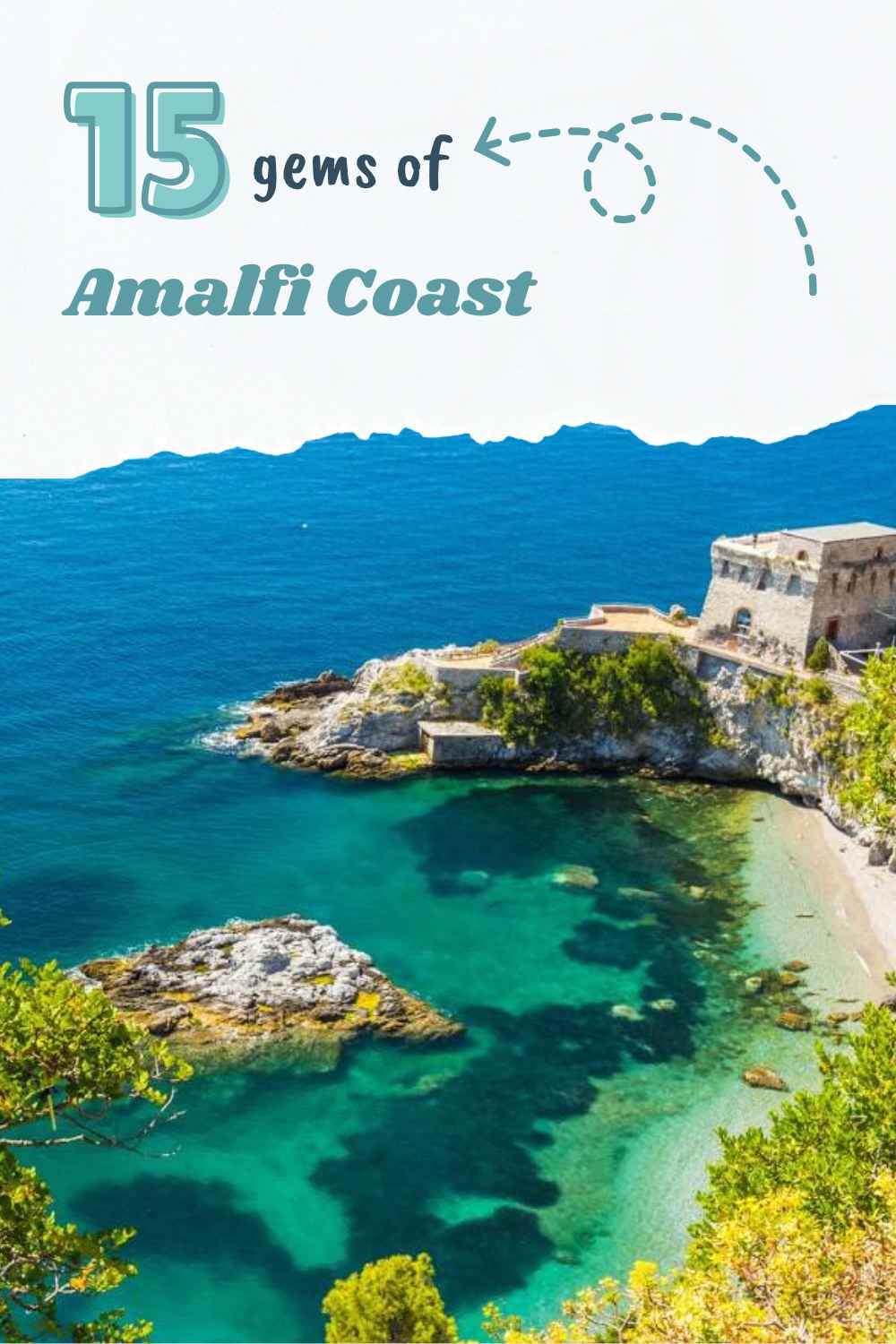




Comments